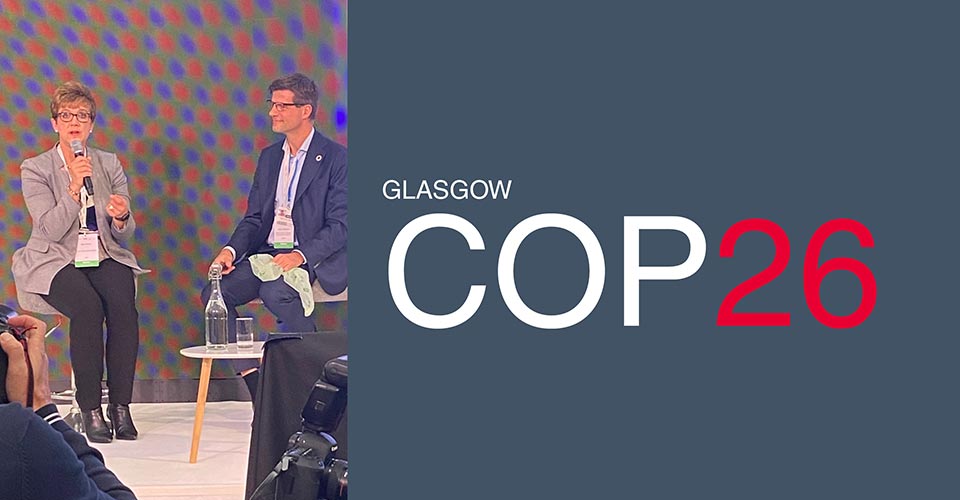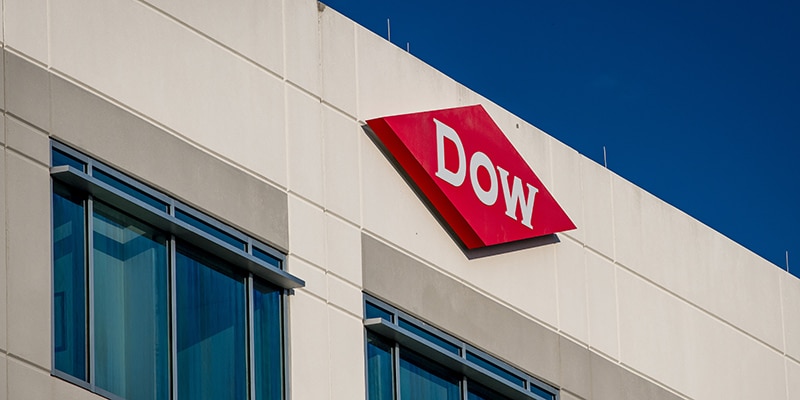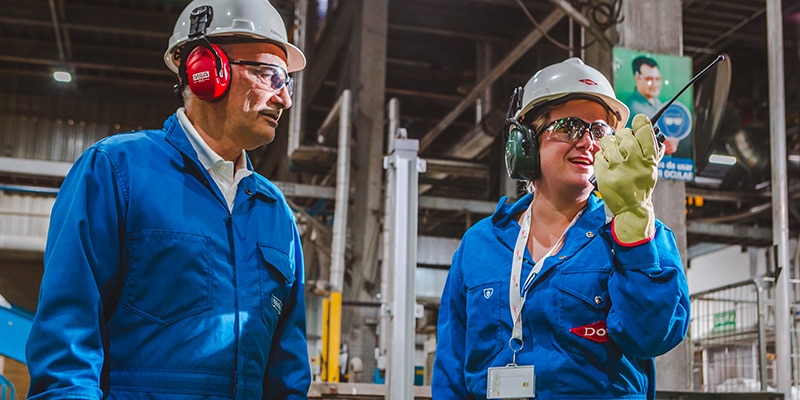
Business takes a leading role at
COP26
I am hopeful because companies like Dow are not only making commitments to address their own emissions, but are taking a lead role in developing new climate-friendly technology.
The United Nations Climate Change Conference, better known as COP26, took place recently in Glasgow. COP26 came at an important moment, as governments, businesses and civil society are seeking to accelerate solutions and commitments to address the threat of climate change.
For Dow, participation in events such as COP26 is important, because we understand and embrace our responsibility to reduce global carbon emissions and use our materials science expertise to innovate products that are essential to the world achieving net-zero emissions.
I attended the conference alongside several other Dow leaders, including Edward Stones, senior business director of Dow’s Feedstocks and Energy business, and Andrew Jones, senior business director of Dow’s Industrial Intermediates and Infrastructure business.
COP26 was primarily an event for government leaders to come together to discuss policy solutions. Additionally, the conference attracted a number of adjacent events. These events provided opportunities for business, policy and non-governmental organizations (NGOs) from across the globe to share best practices and take action on a number of fronts – from implementing net-zero pledges to sharing progress on transitional decarbonization technologies.
Here are my takeaways on how Dow and other businesses are seeking to make an impact and accelerate climate action:
- Companies have made climate action central to their strategies, and a growing number of companies are setting net-zero and carbon-neutral commitments. Dow understands and embraces our responsibility to reduce global carbon emissions, which is why we have committed to achieving net carbon neutrality by 2050. Already, we have reduced our greenhouse gas (GHG) emissions by 15% in the past 15 years, and we are on track to reduce emissions another 15% by the end of the decade.
The challenge ahead, of course, with these bold carbon reduction commitments is to move from promise to action. At Dow, we have a clear path forward. Already, we are a top user of clean energy in the chemical industry and have secured more than 850 MW of renewable power for use at Dow sites globally. We also are working to advance a variety of manufacturing technologies to decarbonize our processes. We have plans to renew our manufacturing fleet in a strategic way that helps us maintain our cost advantage while reducing carbon emissions. In October, we announced plans to build the world’s first zero-carbon ethylene and polyethylene complex at our Fort Saskatchewan, Alberta, facility. The project will convert emitted gas into clean hydrogen fuel and capture and store CO2 emissions, while tripling production at the site and taking the entire site to near zero Scope 1 and 2 CO2 emissions. We also have plans to reduce CO2 emissions by 40% by 2030 at our operations in Terneuzen, the Netherlands, using circular hydrogen.
Hydrogen is an important resource that will enable economies to meet net-zero goals, among many other solutions. Hydrogen can be used to store, move, and deliver energy produced from other sources. It has the potential to help decarbonize three large sectors of the economy: transportation, electricity generation and manufacturing process heat. Scaling up existing hydrogen technologies will deliver competitive low-carbon solutions across a wide range of applications, having said that, to be realistic in the future dramatic investments are required in existing and new technologies. Dow’s Andrew Jones had the opportunity to emphasize the importance of the different hydrogen technologies on the path to decarbonizing the industrial sector at Climate Action’s Hydrogen Transition Summit.
- Public policy is needed to support and accelerate even more action from the business sector. Public policy can be an important piece of a business’ strategy to decarbonize assets and provide innovative products for customers. For example, Dow sees carbon pricing as one of the most effective and cost-efficient means of driving deep decarbonization. It can guide innovation, drive efficiency and incentivize businesses and society to transition to cleaner forms of energy, which may also help create a market for technologies like circular, clean hydrogen so their use is cost-competitive.
An enabling environment is also needed to incentivize the product innovations needed to meet society’s net-zero ambitions. Many of Dow’s products lower our customers’ greenhouse gas emissions by more than the emissions used to manufacture them. Currently, we are collaborating with Columbia University, The Nature Conservancy and others on a new Carbon Index Project. The project will focus on calculating and allocating the environmental benefits of products and technologies that reduce or eliminate GHG emissions and provide tools for decision-makers to accelerate global progress toward 2030 and 2050 emissions targets.
- Greater use of recycled materials is emerging as a way to get to the next level of sustainable manufacturing and tackle climate change. Moving to a more circular economy is essential if we are to meet the Paris Agreement targets. Around 45% of global emissions come from products we use and consume every day, according to the Ellen MacArthur Foundation. There are two important areas where Dow is playing a role in driving circularity. We are helping brand owners design their products for recycling. We also are investing in key technologies that will help the world recycle far more than it does today – including development of advanced recycling technologies for plastics. Dow, for example, is working with UK-based Mura Technology to support the rapid scaling of Mura’s new advanced recycling process. Mura’s technology has demonstrated that it can recycle all forms of plastic – including harder-to-recycle multi-layer, flexible plastics used in packaging.
During a panel discussion at Climate Action’s Sustainable Innovation Forum, I shared Dow’s perspective and actions to drive circular economy solutions on the path to a low-carbon-emissions world. I was joined on the panel by representatives from several major cities and was impressed by the variety of actions those cities are taking to eliminate waste and lower carbon emissions.
Although news stories have shared varying opinions on the progress or lack of progress on climate change achieved at COP26, the event left me hopeful. I am hopeful because companies like Dow are not only making commitments to address their own emissions, but are taking a lead role in developing new climate-friendly technology. I am hopeful because the role of business and the connection between business, government and NGOs in tackling climate has never been stronger. That hope is becoming reality because we are making real progress on addressing climate change on several important fronts.
It is time to take the positive momentum created at COP26 and continue to move forward together to accelerate the transition to a sustainable world.
Mary Draves, Dow Chief Sustainability Officer





